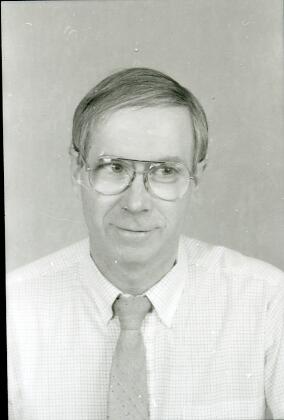
Área de título y declaración de responsabilidad
Título apropiado
George J. Sofko - Portrait
Tipo general de material
- Graphic material
Título paralelo
Otra información de título
Título declaración de responsabilidad
Título notas
Nivel de descripción
Item
Institución archivística
Código de referencia
Área de edición
Declaración de edición
Declaración de responsabilidad de edición
Área de detalles específicos de la clase de material
Mención de la escala (cartográfica)
Mención de proyección (cartográfica)
Mención de coordenadas (cartográfica)
Mención de la escala (arquitectónica)
Jurisdicción de emisión y denominación (filatélico)
Área de fechas de creación
Fecha(s)
-
1991 (Criação)
Área de descripción física
Descripción física
2 photographs : b&w ; 3.5 x 2.5 cm
2 negatives : b&w ; 3 x 2 cm
Área de series editoriales
Título apropiado de las series del editor
Títulos paralelos de serie editorial
Otra información de título de las series editoriales
Declaración de responsabilidad relativa a las series editoriales
Numeración dentro de la serie editorial
Nota en las series editoriales
Área de descripción del archivo
Nombre del productor
Historial de custodia
Alcance y contenido
Head and shoulders image of George J. Sofko, Institute of Space and Atmospheric Studies.
Bio/Historical Note: The Institute of Space and Atmospheric Studies (ISAS) was formed in 1956 to study the aurora (northern lights), the related 'disturbances' in the upper atmosphere and ionosphere, and the effects of solar activity upon climate. On 11 July 1967, the University's Institute of Space and Atmospheric Studies in co-operation with Bristol Aero-Space Industries Ltd. of Winnipeg sent up two Black Brant 3 rockets from the Churchill Research Range. The launchings marked the third and fourth in a series of experiments to better understand weather patterns by studying the photochemistry of the atmosphere. Each rocket rose approximately 100 km into the atmosphere. The clamshell nose cones separated in flight to expose a light measuring device called a photometer. All measurements were “telemetered” to the ground and no attempt was made to recover the scientific instruments. Both payloads, weighing approximately 80 kilograms, were built and tested in the workshops of the institute on campus and then sent to Winnipeg for further testing and incorporation into the nose cones. Bristol Aero-Space supplied the rocket engineering under a contract with the National Research Council. The institute continues to expand the world's knowledge and understanding of how the sun and the earth interact; and trained more than 200 scientists and engineers in a wide range of technical and scientific areas. ISAS developed observing systems for space and atmospheric sciences, ground based optical and radar instruments, and satellite systems, remote sensing technology, and knowledge of STP processes are a vital resource for "Canadian Space Science" and couples powerfully into high-technology industries.
Área de notas
Condiciones físicas
Origen del ingreso
Arreglo
Idioma del material
Escritura del material
Ubicación de los originales
Disponibilidad de otros formatos
Restricciones de acceso
Condiciones de uso, reproducción, y publicación
Photographer:: DAVS
Copyright holder: University of Saskatchewan
Other terms: Copyright: University of Saskatchewan.

